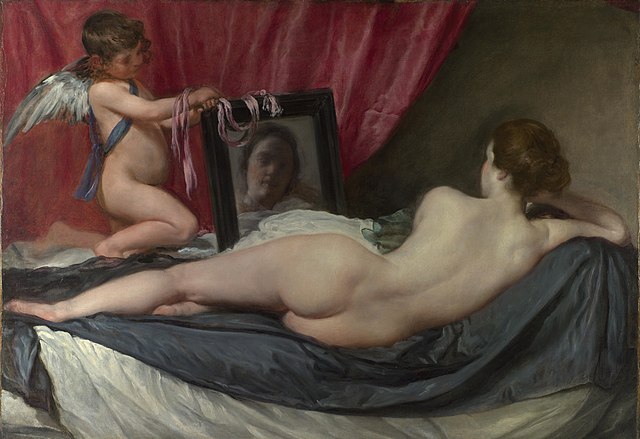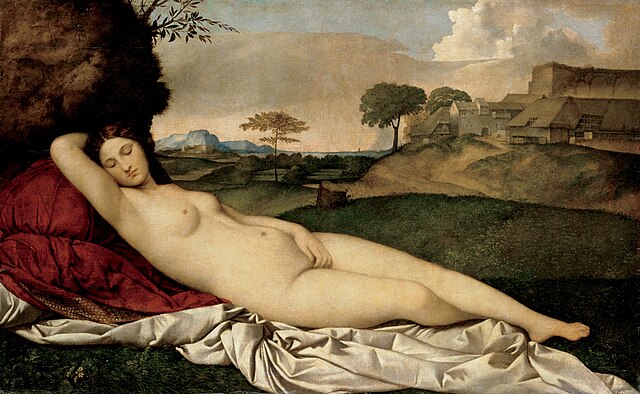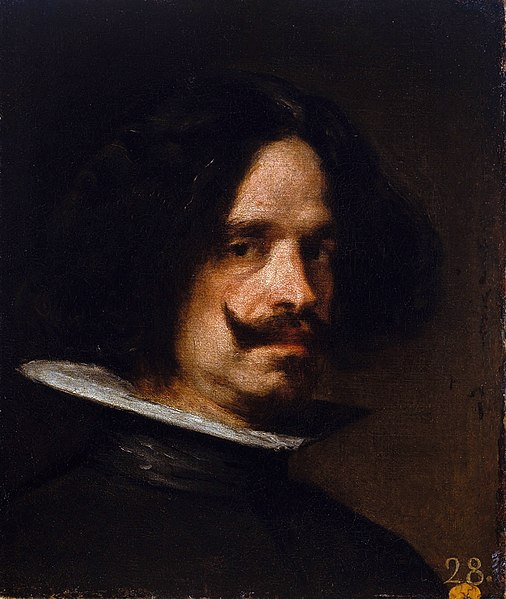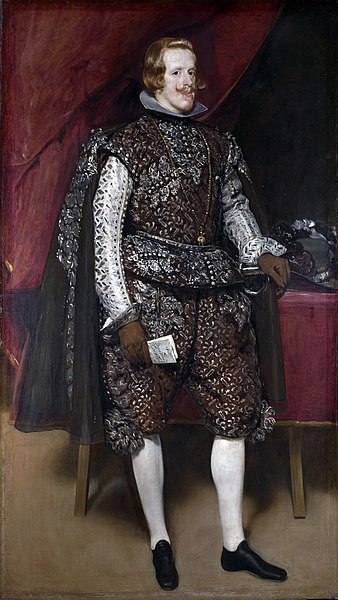Rokeby Venus
Videos
Page
The Rokeby Venus is a painting by Diego Velázquez, the leading artist of the Spanish Golden Age. Completed between 1647 and 1651, and probably painted during the artist's visit to Italy, the work depicts the goddess Venus in a sensual pose, laying on a bed with her back facing the viewer, and looking into a mirror held by the Roman god of physical love, her son Cupid. The painting is in the National Gallery, London.

Rokeby Venus, c. 1647–1651. 122 cm × 177 cm (48 in × 70 in). National Gallery, London.

Peter Paul Rubens' Venus at the Mirror, c. 1614–15, shows the goddess with her traditionally blond hair. As with Velázquez's Venus, the goddess's reflected image does not match that portion of her face visible on the canvas. In contrast to Rubens' luscious and 'rounded' ideal form, Velázquez painted a more slender female figure.

Velázquez's Coronation of the Virgin, c. 1641–42. It has been suggested that the model used here was the same as the one used in the Venus.

Giorgione, Sleeping Venus, c. 1510. Giorgione shows Venus sleeping on fine textiles in an outdoor setting against a sumptuous landscape. As with Velázquez's Venus, Giorgione painted the goddess as a brunette, going against tradition.
Diego Velázquez
Videos
Page
Diego Rodríguez de Silva y Velázquez, Knight of the Order of Santiago was a Spanish painter, the leading artist in the court of King Philip IV of Spain and Portugal, and of the Spanish Golden Age.

Self-portrait, c. 1640

Birthplace of Velázquez in Seville

Vieja friendo huevos (1618, English: Old Woman Frying Eggs). National Gallery of Scotland, Edinburgh

Philip IV in Brown and Silver, 1632